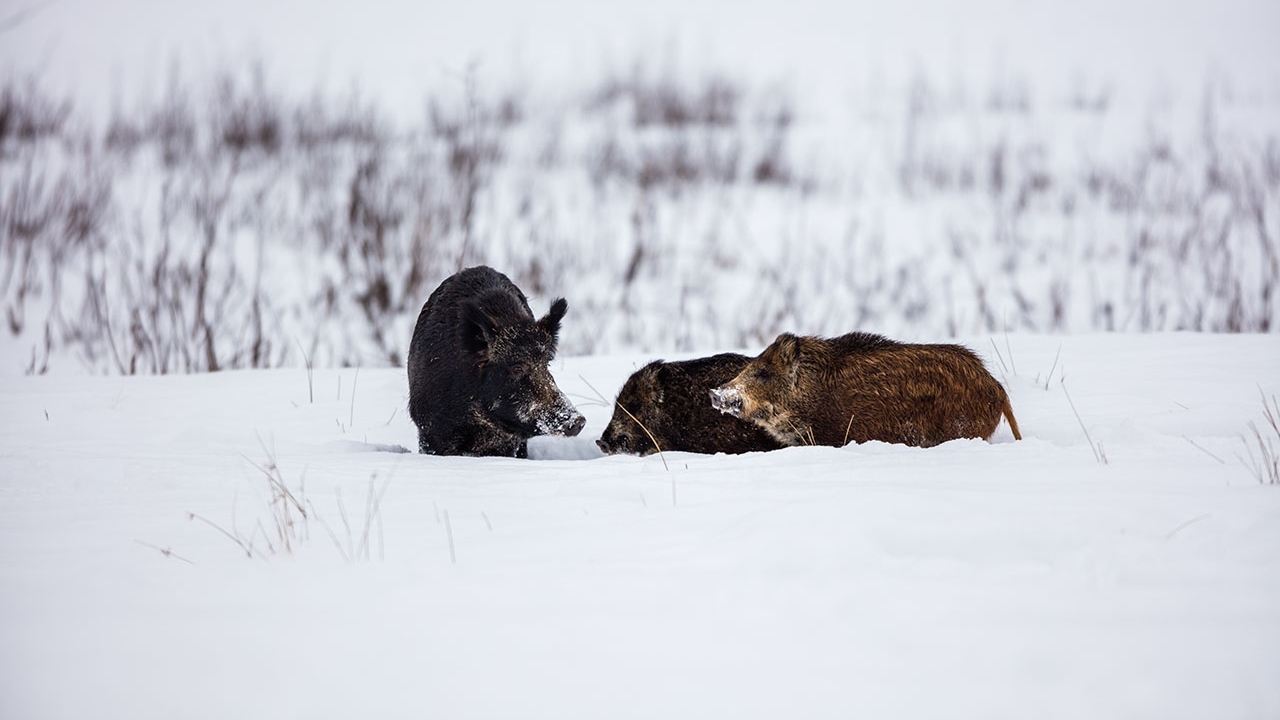Potential Feral Swine Expansion from Canada

Invasive feral swine were introduced to Canada in the 1980s through accidental and intentional releases from farms in Alberta, Saskatchewan, and Manitoba. By 2023, they had been detected across more than 1 million square kilometers of the country. Concerns exist that Canadian feral swine may expand south into the United States through agroecosystems and agro-forest landscapes.
Habitat connectivity can influence the distribution, health, and genetic diversity of animal populations, including invasive species, such as feral swine. Understanding what habitats are preferred by feral swine and how connected those habitats are on the landscape is essential to managing the spread of this invasive species.
USDA-APHIS Wildlife Services (WS) researchers at the NWRC partnered with WS-North Dakota, APHIS-Veterinary Services, and university experts to examine the potential for Canadian feral swine to invade across the northern prairies from western Canada into several northern US states that are currently free of feral swine.
Researchers used data from 22 GPS-collared feral swine in Canada to determine feral swine movements and habitat preferences. Analysis showed feral swine in Canada preferred deciduous forests, crops, and wetlands.
“Deciduous forest, wetlands, and agricultural crops are relatively flat and may be easier to traverse,” states NWRC Feral Swine Project Leader Dr. Kurt VerCauteren. “Plus, they provide food, hiding and thermoregulatory cover for feral swine, while reducing the risk of predation, hunting, and human disturbance.”
Using data from the Commission for Environmental Cooperation North American landcover map, researchers determined such intermixed habitats are found throughout southern Saskatchewan and Manitoba, northeastern Montana, North and South Dakota, and western portions of Minnesota making these areas particularly vulnerable to feral swine invasion.
“Our results show the potential for expansion of feral swine in the northern prairies of North America,” concludes VerCauteren. “This information will help guide Wildlife Services and our partners’ efforts to monitor the species as it continues to expand its range.”
For more information, please contact NWRC@usda.gov.

